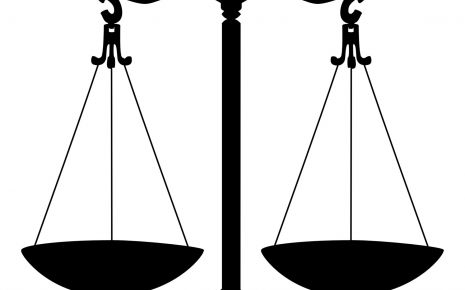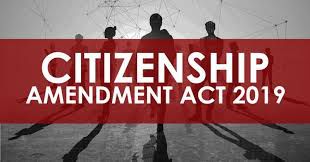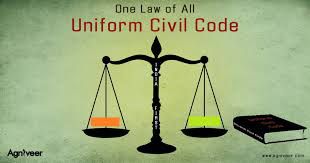Resilience of Basic Structure of the Constitution: An Overview
Introduction
In accordance with the Indian Constitution, the Parliament as well as State Legislatures have the authority to enact laws within their respective domains. The exclusive power to revise the Constitution is vested only in the Parliament, not in state legislatures. Nonetheless, this exceptional authority of the Parliament is not without limitations. The Supreme Court has been granted jurisdiction to nullify any statute it deems unconstitutional. In keeping with the Basic Structure Doctrine of the Indian Constitution, any revision endeavoring to modify its underlying fundamental framework would be deemed void and ineffective.
The basic structure of India's Constitution symbolizes its essential and unalterable core, ensuring protection against ordinary amendments from Indian Parliament. The 'Basic Structure Doctrine' was given birth to by Indian Judiciary on 24th April 1973 during Keshavananda Bharati case. Its objective was restricting parliament's amending authority thereby preserving the kernel framework of constitution known as 'basic structure'.
This doctrine acts as a protective barrier guarding fundamental principles and values of Indian constitution preventing arbitrary modifications that may gradually erode the basic structure. However, the specific components and confinements defining basic structure fall under judicial interpretation.
Basic structure doctrine safeguards constitution against legislative overreach witnessed during Emergence Era restraining parliament's power to excessively amend constitution through article 368.Nevertheless some argue that constitutional amendments even in fundamental areas are vital for adaptability and survival of constitution.
The basic structure doctrine is an age-old judicial principle that the constitution of a sovereign nation possesses some attributes that cannot be obliterated by its Parliament. The principle is acknowledged in India, Bangladesh, Malaysia, Pakistan, and Uganda. According to the SR Bommai Case, the Preamble manifests a basic structure of the constitution. Article 368 does not empower Parliament to change the basic structure of the Constitution.
Illustration of Basic Structure
The celebrated Kesavananda Bharati case, a breakthrough in Indian law, clarified that the basic structure of the Constitution cannot be modified, not even by way of amendment. This crucial framework encompasses concepts such as the supremacy of the Constitution, India's unity and sovereignty, democratic and republican governance, federalism, secularism, separation of powers and individual freedom, fundamental rights.
Additional features like the rule of law, judicial review, parliamentary mechanism, rule of equality, balance between Fundamental Rights and Directive Principles, free and fair elections, restricted parliamentary power to change constitutional provisions and jurisdictional authority vested in Supreme Court under Articles 32, 136. 142 and 147 and High Courts under Articles 226 and 227 are also regarded as core elements.
In India's legislative domain rests, the power to amend constitution however restrictions do apply. The basic structure defined by Supreme Court in Kesavananda Bharati case lies outside ordinary amendments' purview. Cases deserving mention such as Golaknath v. State of Punjab (1967) and Minerva Mills v. Union of India (1980) established this principle that Parliament lacks authority to disturb Constitution's basic structure while retaining capability to amend other aspects if so required.
Consequences of violation of basic structure of the constitution
Safeguarding certain fundamental principles of the Constitution against regular legislative amendment by the Parliament is inherent in the basic structure doctrine that has been established by the Supreme Court of India. Consequences of violating this doctrine can be profound, especially in a democratic system like India.
Here are some potential repercussions that could arise:
Conclusion
Disregarding the basic structure of the constitution has profound implications for the legal, political, and social spheres. The courts have the power to review and nullify any attempt to violate these principles, thanks to the basic structure doctrine, which aims to protect the Constitution's essential tenets.
As a crucial instrument for preserving the Constitution's stability and promoting its core ideals, it is an invaluable mechanism. The exact definition of what constitutes the basic structure may not always be clear, resulting in continuous discussions and lawful disputes, however it is crucial to understand that the basic structure is a potent protective measure. Additionally, as long as the amendments do not breach the basic structure, the legislative body holds the jurisdiction to modify other parts of the Constitution.
References:
Email: [email protected], Ph no: 9836576565
In accordance with the Indian Constitution, the Parliament as well as State Legislatures have the authority to enact laws within their respective domains. The exclusive power to revise the Constitution is vested only in the Parliament, not in state legislatures. Nonetheless, this exceptional authority of the Parliament is not without limitations. The Supreme Court has been granted jurisdiction to nullify any statute it deems unconstitutional. In keeping with the Basic Structure Doctrine of the Indian Constitution, any revision endeavoring to modify its underlying fundamental framework would be deemed void and ineffective.
The basic structure of India's Constitution symbolizes its essential and unalterable core, ensuring protection against ordinary amendments from Indian Parliament. The 'Basic Structure Doctrine' was given birth to by Indian Judiciary on 24th April 1973 during Keshavananda Bharati case. Its objective was restricting parliament's amending authority thereby preserving the kernel framework of constitution known as 'basic structure'.
This doctrine acts as a protective barrier guarding fundamental principles and values of Indian constitution preventing arbitrary modifications that may gradually erode the basic structure. However, the specific components and confinements defining basic structure fall under judicial interpretation.
Basic structure doctrine safeguards constitution against legislative overreach witnessed during Emergence Era restraining parliament's power to excessively amend constitution through article 368.Nevertheless some argue that constitutional amendments even in fundamental areas are vital for adaptability and survival of constitution.
The basic structure doctrine is an age-old judicial principle that the constitution of a sovereign nation possesses some attributes that cannot be obliterated by its Parliament. The principle is acknowledged in India, Bangladesh, Malaysia, Pakistan, and Uganda. According to the SR Bommai Case, the Preamble manifests a basic structure of the constitution. Article 368 does not empower Parliament to change the basic structure of the Constitution.
Illustration of Basic Structure
The celebrated Kesavananda Bharati case, a breakthrough in Indian law, clarified that the basic structure of the Constitution cannot be modified, not even by way of amendment. This crucial framework encompasses concepts such as the supremacy of the Constitution, India's unity and sovereignty, democratic and republican governance, federalism, secularism, separation of powers and individual freedom, fundamental rights.
Additional features like the rule of law, judicial review, parliamentary mechanism, rule of equality, balance between Fundamental Rights and Directive Principles, free and fair elections, restricted parliamentary power to change constitutional provisions and jurisdictional authority vested in Supreme Court under Articles 32, 136. 142 and 147 and High Courts under Articles 226 and 227 are also regarded as core elements.
In India's legislative domain rests, the power to amend constitution however restrictions do apply. The basic structure defined by Supreme Court in Kesavananda Bharati case lies outside ordinary amendments' purview. Cases deserving mention such as Golaknath v. State of Punjab (1967) and Minerva Mills v. Union of India (1980) established this principle that Parliament lacks authority to disturb Constitution's basic structure while retaining capability to amend other aspects if so required.
Consequences of violation of basic structure of the constitution
Safeguarding certain fundamental principles of the Constitution against regular legislative amendment by the Parliament is inherent in the basic structure doctrine that has been established by the Supreme Court of India. Consequences of violating this doctrine can be profound, especially in a democratic system like India.
Here are some potential repercussions that could arise:
- Judicial Review: The Supreme Court has the power of judicial review, which allows them to question amendments that go against the Constitution. Should an amendment fail to abide by the fundamental principles of the Constitution, the Supreme Court can deem it illegitimate.
- Amendment Nullification: The Supreme Court holds authority to nullify an amendment if it violates the fundamental nature of the Constitution's framework; this removal would only affect the added content, leaving the original provisions intact.
- Protection of Core Values: Core values must be protected and upheld at all times. This is extremely important as they serve as the foundation of our beliefs and principles. We must ensure that even in the midst of change and uncertainty, our core values remain intact. Any threat or action that goes against these values should be swiftly addressed and corrected. Our commitment to our core values should never waver and should always guide our decisions and actions.
- Constitutional Crisis: The basic structure doctrine functions as a fortress, guarding the fundamental values and principles of the Constitution from modifications, while still enabling the Constitution to develop to adapt to new requirements. Erosion of the Constitution's integrity and a constitutional crisis might arise if there is a violation of its basic structure, leading to a disruption in the balance of power among various government branches.
- Public and Political Response: In such cases, public and political response can be significant and widespread. Across the nation, diverse opinions can be expressed regarding the events in question. Mixed emotions can be exhibited by the populace, with some supporting the events and others speaking out against it. The legitimacy of an amendment being called into question can lead to protests, legal challenges, and debates among lawmakers and scholars about the Constitution's basic structure. Such violations can prompt significant public and political responses.
- Amendment to Constitution: To alter the fundamental framework of the Constitution, a two-thirds majority in Parliament and acceptance from most states are required. If sufficient agreement is reached on changes to the Constitution, the established amendment process must be pursued.
Conclusion
Disregarding the basic structure of the constitution has profound implications for the legal, political, and social spheres. The courts have the power to review and nullify any attempt to violate these principles, thanks to the basic structure doctrine, which aims to protect the Constitution's essential tenets.
As a crucial instrument for preserving the Constitution's stability and promoting its core ideals, it is an invaluable mechanism. The exact definition of what constitutes the basic structure may not always be clear, resulting in continuous discussions and lawful disputes, however it is crucial to understand that the basic structure is a potent protective measure. Additionally, as long as the amendments do not breach the basic structure, the legislative body holds the jurisdiction to modify other parts of the Constitution.
References:
- https://www.drishtiias.com/to-the-points/Paper2/directive-principles-of-state-policy-
- https://byjus.com/free-ias-prep/landmark-cases-relating-basic-structure-constitution/
Email: [email protected], Ph no: 9836576565
Law Article in India
Legal Question & Answers
Lawyers in India - Search By City
LawArticles
How To File For Mutual Divorce In Delhi

How To File For Mutual Divorce In Delhi Mutual Consent Divorce is the Simplest Way to Obtain a D...
Increased Age For Girls Marriage

It is hoped that the Prohibition of Child Marriage (Amendment) Bill, 2021, which intends to inc...
Facade of Social Media

One may very easily get absorbed in the lives of others as one scrolls through a Facebook news ...
Section 482 CrPc - Quashing Of FIR: Guid...

The Inherent power under Section 482 in The Code Of Criminal Procedure, 1973 (37th Chapter of t...
The Uniform Civil Code (UCC) in India: A...

The Uniform Civil Code (UCC) is a concept that proposes the unification of personal laws across...
Role Of Artificial Intelligence In Legal...

Artificial intelligence (AI) is revolutionizing various sectors of the economy, and the legal i...








Please Drop Your Comments